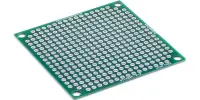Nanomechanics is a science and engineering discipline that studies the mechanical behavior of systems at the nanoscale. It entails investigating the behavior of materials and structures whose dimensions range from a few nanometers to hundreds of nanometers. The laws of classical mechanics no longer apply at this scale, and quantum mechanics and other physical phenomena come into play.
The study of fundamental mechanical (elastic, thermal, and kinetic) properties of physical systems at the nanometer scale is known as nanomechanics. Biophysics, classical mechanics, solid-state physics, statistical mechanics, materials science, and quantum chemistry have all collided to form nanomechanics. Nanomechanics, as a branch of nanoscience, provides a scientific foundation for nanotechnology.
The study and application of fundamental mechanical properties of physical systems at the nanoscale, such as elastic, thermal, and kinetic material properties, is the focus of nanomechanics, a branch of nanoscience.
At the nanoscale, nanomechanics investigates material properties such as stiffness, strength, elasticity, and deformation mechanisms. It seeks to comprehend and manipulate the mechanical properties of nanomaterials and nanostructures for use in a variety of applications such as nanoelectromechanical systems (NEMS), nanosensors, nanorobotics, and nanomedicine.
Atomic force microscopy (AFM) is a fundamental tool in nanomechanics that allows researchers to probe and manipulate materials at the atomic and molecular level. AFM can measure forces, surface topography, and mechanical properties with high precision, allowing researchers to study nanoscale mechanical behavior.
Computational modeling and simulations are also used in nanomechanics to predict the mechanical properties of nanomaterials. These simulations aid in the comprehension and design of nanoscale devices and structures with specific mechanical properties.
Application
Nanomechanics has applications in many fields, including materials science, electronics, medicine, and energy. It has the potential to revolutionize fields such as nanoscale electronics, high-performance materials, biomedical devices, and nanorobotics by providing better functionality and performance than traditional macroscale systems.
Applications of nanomechanics span a wide range of fields, including materials science, engineering, biology, and medicine. By understanding and controlling the mechanical properties at the nanoscale, researchers can develop advanced materials with enhanced strength, flexibility, and durability. Nanomechanics also plays a crucial role in the design and optimization of nanoscale devices, such as nanosensors, nanoelectromechanical systems (NEMS), and nanorobots.
















